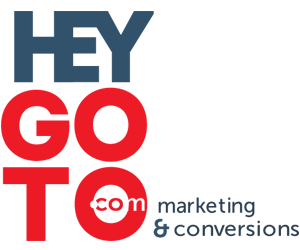Most people like to watch online video. Some business owner remain doubtful about the profit of incorporating online video into…
Podcasts Yield High Return on Investment for Businesses
A podcast is a lot like a Website. A podcast series (i.e. routine podcasts from podcaster or Internet radio podcast show like Radiospectives) is a lot like a blog. At first, these analogies may seem odd, but let’s explore their commonality.
A Website or a blog exist as an entity on the Internet. The Website and blog may be of the highest quality, but all will be for naught if they are not found and read. Generally, for a Website or blog this means being found in the major search engines like Google and Yahoo. In fact, statistics indicate that nearly 90% of the first visit to a Website or blog is the result of a search. This is why search engine marketing is so critical for business Websites and blogs. It turns out that the same is true of a podcast or podcast series.
Getting Your Podcast Found
The first step to a business being able to monetize a podcast is assuring it is found by their target market. Let’s examine some of the ways this can be accomplished.
- Directories – First, the podcast should be submitted to all the major podcast directories. For business podcasts, I especially recommend iTunes and iBizRadio. I recommended iTunes because it is the most popular podcast directory on the planet and draws visitors from all sectors of the population. I recommended iBizRadio because it is the most popular business podcast directory on the planet. It ranks number one in Google for popular keywords like “business podcast directory” and “business podcasts”.
- Search Engines – The next step is to submit your business podcast to all major podcast search engines such as Podscope and Blinkx. These search engines are to podcasts what Google and Yahoo are to Websites. Although Google and Yahoo don’t accept podcasts directly, they index every popular podcast search engine and directory. This means a podcast search in Google and Yahoo will lead searchers to the popular podcast directories and search engines.
- Your Own Website – A critical place to promote your podcast is on your Website. I recommend you make it easy for visitors and provide, in addition to a podcast syndication link, a simple audio or video feed so the Website visitor can listen or view the podcast without downloading it with a podcatcher, such as an iPod, MP3 player, MP4 player, “smart” phone, or computer software program used to download and access podcasts.
- Video Sharing Sites – I also recommend that all video podcasts be uploaded as a video feed to YouTube and other video sharing sites. This is simply a smart promotional practice that allows the podcast to play a dual role.
- Press Releases – Podcasts may also be promoted as part of a public relations campaign. For example, they can be incorporated into a press release or article. Going one-step further, the entire press release or article can be published as a podcast, thereby significantly increasing its reach and impact. The podcast can be incorporated in email marketing campaigns and e-newsletters as well.
Getting a High Return from Your Podcast
Once the podcast is found by your target market, how do you get them to take action? This is truly where the money is made. In the case of a pre-roll commercial, testimonial, and post-roll commercial on a popular podcast, it really not much different than a radio or television commercial. However, you have one important advantage over a radio or television commercial. A significant portion of the time, the audience is accessing the podcast on a computer or smart phone and can take immediate action. Even when an iPod or similar player is used, the podcast is available for future action. This is a significant advantage over a radio or television commercial where the audience may not be in a position to write down the information, such as a phone number, and take action.
In the case of an informational podcast, the podcast must be resourceful, but also be an infomercial with an appropriate call to action. Our agency has actually coined the term “PodformercialSM” to describe this format. In both audio and video business podcasts, we track the number of podcast downloads, visits to the client’s Website or landing page, and the number of phone calls. In effect, we are able to attribute if the lead or sale came from the business podcast.
We have done business podcasting for enterprise companies like Honeywell, AmericInn, Dri-Steem, and the Pioneer Press, as well as numerous mid-small companies. The results have been astounding. In some cases, our podcast downloads have approached 100,000 and continue to climb. Typically, the podcast downloads will be in the 1000’s to 10,000’s in just the first few months. Keep in mind that these are people (the target market of the associated company) that actually took the time to find and download the podcast. The return on investment can be huge.
The investment a company faces is typically a modest podcast production and promotion cost, which is dependent on the type and length of the podcast. It is hard to quote exact pricing since each podcast is different and each client has specific objectives for their podcasts. There is also a monthly podcast hosting cost, which runs about the same as hosting a Website. Once the podcast has been launched and promoted, it runs on autopilot. Month after month, it will produce sales and/or leads. We have actually seen months where the client’s podcast campaign out performed their search engine marketing campaign.
I strongly urge you to consider business podcasting in your promotional mix. If you have any questions or comments, we’d love to hear from you.
Contact HeyGoTo at (702) 475-4227 or go to www.HeyGoTo.com today to find out how we can help you! To read more industry information go to the HeyGoTo Blog at http://heygoto.com/wordpress/
Latest posts by David Moceri (see all)
- - August 12, 2023
- Internet Marketing – The Art of Capturing Market Share - May 20, 2017
- Top 3 Social Media Mistakes Online Marketers Need to Avoid - December 31, 2016
This post was written by David Moceri

